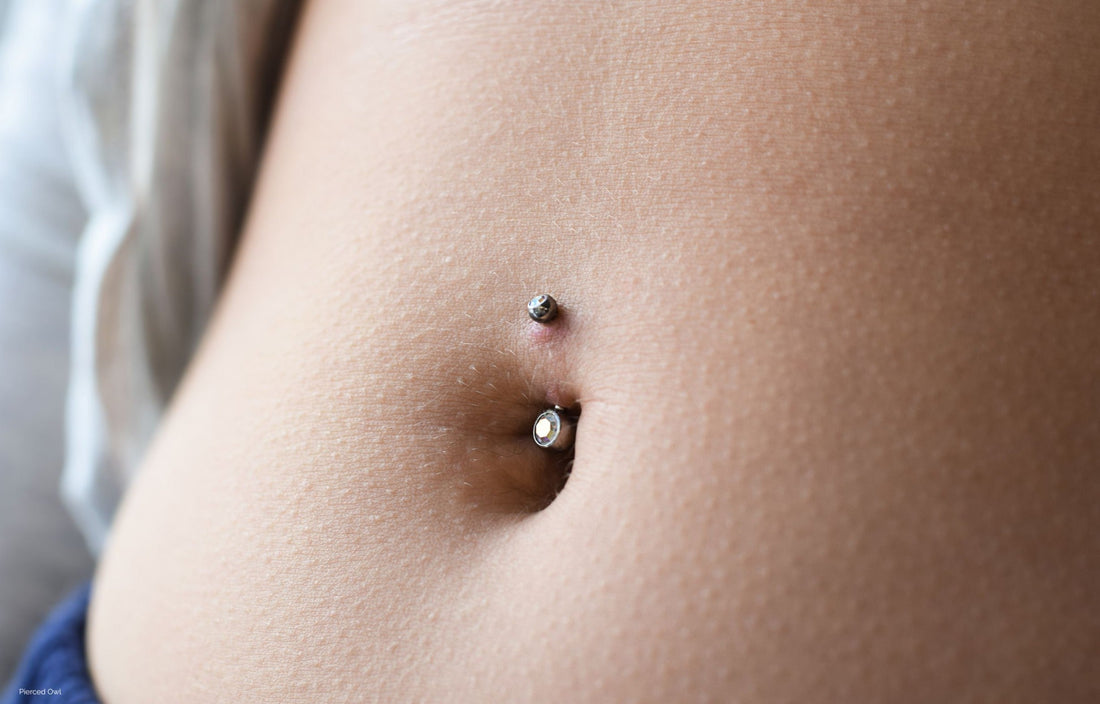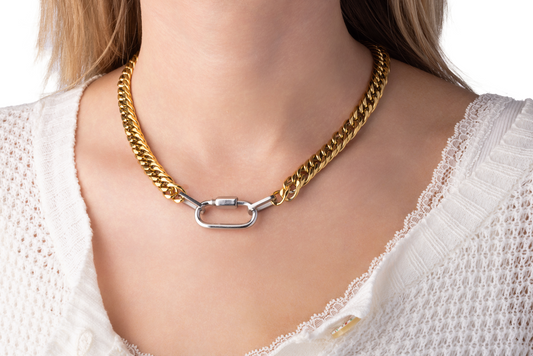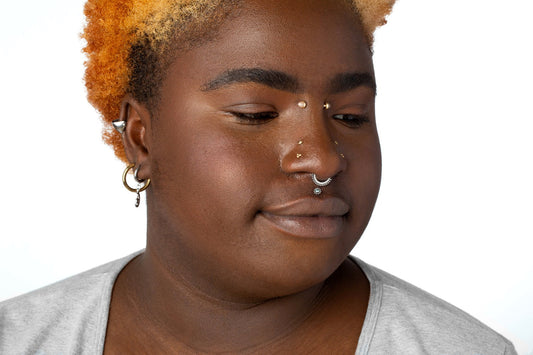Whether you're the owner of one or a dozen beloved piercings, there is one piercing complication that frightens us all -- piercing rejection.
Piercing rejection happens when your body sees your jewelry as a foreign object and tries to push it out. The result? Migration, irritation, scarring, and sometimes the complete loss of the piercing. While technically all piercings can reject, there are some that are more prone than others. Knowing which piercings are prone to migration can help to understand the risks and create realistic expectations for the longevity of those piercings
In this guide, we'll break down:
- Which piercings are prone to rejection.
- The early signs of rejection.
- Aftercare tips to help prevent migration and rejection.
👂What is Piercing Rejection?
Piercing rejection occurs when your body pushes a piece of jewelry closer to the surface of your skin, eventually forcing it out entirely. Unlike an infection or irritation, it's the body's long term response to the piercing. Rejection can be triggered by poor placement, improper jewelry, anatomy, or jewelry fit.
Signs of piercing rejection include:
- Jewelry suddenly sitting closer to the surface.
- Redness or tight skin over the jewelry.
- Thinning skin between the jewelry and your body.
- Irritation or pain to the piercing.
- A sudden change in angle or fit.
🪡 Piercings Prone to Rejection
1. Surface Piercings
Surface piercings can refer to two types of piercings -- piercings that go through a flat area of the body (think anti-eyebrow or surface tragus piercings done with a staple bar) or piercings that go through a subtle ridge of the body (eyebrow or belly piercing). While both kinds of surface piercings have a higher risk of rejection, the former is most at risk due to the shallow placement of the jewelry and tension prone-location. Because of this, surface piercings are often considered "long-term temporary" due to the high risk of rejection.
2. Microdermal Piercings
Microdermal piercings are a type of single point piercing where a small base rests directly under the skin and a decorative top sits at the surface. This type of piercing is considered "long-term temporary" due to the high risk of rejection, especially on areas that are prone to friction (hips, chest, or arms). Because the jewelry sits shallow under the skin, even a minor snag can cause the anchor to be irritated and trigger migration.
3. Eyebrow Piercings
Eyebrow piercings are more prone to rejection due to the shallow portion of skin that the piercing goes through. While some eyebrows are very prominent and offer a stable area to be pierced, other eyebrows are flatter and have less of a ridge. If the placement is too shallow, the piercing is more vulnerable to rejection. This area is also susceptible to frequent movement or tugging which can trigger migration.

4. Navel Piercings
Belly piercings are another piercing that can be placed in a more shallow area of the body (depending on the anatomy). Due to constant friction, movement, and pressure from sitting or sleeping, navel piercings are vulnerable to rejection. Navels that are pierced in too shallow of an area are also more vulnerable to rejection. While many people are able to enjoy belly piercings for decades, there is a higher risk of rejection for this piercing.
5. Bridge Piercings
Similar to eyebrow and navel piercings, bridge piercings and their longevity depend heavily on the anatomy of the person. If someone has a very defined ridge, the bridge piercing will be more stable. However, if the pierced area is shallow, the piercing is more prone to migrating or fully rejecting.

🚫How to Prevent Piercing Rejection
While you can't fully control how your body will respond to a piercing, there are steps that can be taken to reduce the risk and promote the longevity of your piercing.
✅Choose High Quality Jewelry
Materials and quality matter. Implant-grade titanium that is internally threaded or threadless is best for fresh or healing piercings.
✅Work with an Experienced Piercer
Rejection can often start with poor placement. Research your piercer ahead of time and check their portfolio for the specific piercing you plan to get. Always visit a licensed and experienced piercer.
✅Keep It Clean
Stick to a gentle saline spray one to two times a day while healing. Avoid harsh soaps, alcohol, makeup, or skincare products to the area. Over-cleaning can cause dryness or irritation to the body.
✅Avoid Pressure, Friction, or Trauma
Don't sleep on fresh piercings and avoid changing jewelry while the piercing is healing. Avoid bumping or snagging the piercing as much as possible.
➡️When to Remove a Rejecting Piercing
If you notice that your piercing is migrating significantly, or the skin between the entry and exit points becomes extremely thin, it may be time to retire the piercing to avoid scarring or complete rejection.
Consulting a professional piercer before retiring the piercing can be helpful. They can assess the damage and recommend the next steps for healing or re-piercing in the future.
🗣️Listen to Your Body
Rejection is not inevitable for many piercings. With the right placement, high-quality jewelry, and proper care, even "long-term temporary" piercings and those with a higher risk of rejection can be enjoyed for years.
If you're shopping for safe body jewelry designed to minimize irritation and maximize comfort, check out our collection of titanium jewelry --perfect for long-term wear.




